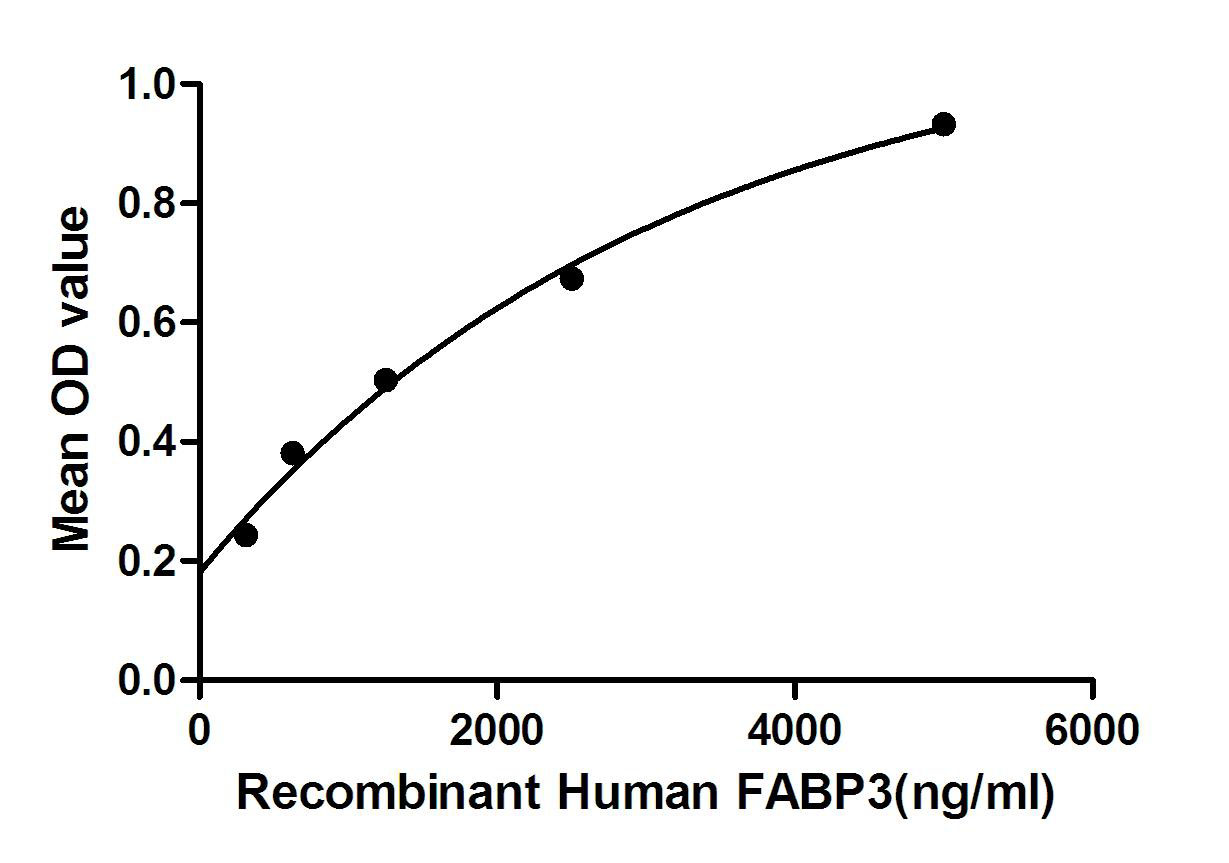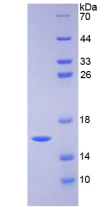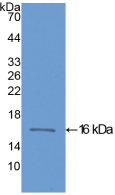Active Heart-type Fatty Acid Binding Protein (H-FABP) 

MDGI; FABP11; H-FABP; O-FABP; Hfabp; FABP3; Fatty Acid Binding Protein 3, Muscle And Heart; Mammary Derived Growth Inhibitor; Fatty Acid Binding Protein 11; Muscle fatty acid-binding protein; Heart-ty
Overview
Properties
- Product No.APB243Hu01
- Organism SpeciesHomo sapiens (Human) Same name, Different species.
- ApplicationsCell culture; Activity Assays.
Research use only - DownloadInstruction Manual
- CategoryMetabolic pathwayCardiovascular biology
- Buffer Formulation20mM Tris, 150mM NaCl, pH8.0, containing 1mM EDTA, 1mM DTT, 0.01% SKL, 5% Trehalose and Proclin300.
- Traits Freeze-dried powder, Purity > 95%
- Isoelectric Point6.6
Sign into your account
Share a new citation as an author
Upload your experimental result
Review

Contact us
Please fill in the blank.
Activity test

Fatty Acid Binding Protein 3, Muscle And Heart (FABP3) also known as mammary-derived growth inhibitor is a protein that in humans is encoded by the FABP3 gene. FABP3 is a small cytoplasmic protein (15kDa) released from cardiac myocytes following an ischemic episode. It is involved in active fatty acid metabolism where it transports fatty acids from the cell membrane to mitochondria for oxidation. Besides, Fatty Acid Binding Protein 3, Muscle And Heart (FABP3) has been identified as an interactor of SOD1, thus a binding ELISA assay was conducted to detect the interaction of recombinant human FABP3 and recombinant human SOD1. Briefly, FABP3 were diluted serially in PBS, with 0.01% BSA (pH 7.4). Duplicate samples of 100μL were then transferred to SOD1-coated microtiter wells and incubated for 2h at 37℃. Wells were washed with PBST and incubated for 1h with anti-FABP3 pAb, then aspirated and washed 3 times. After incubation with HRP labelled secondary antibody, wells were aspirated and washed 3 times. With the addition of substrate solution, wells were incubated 15-25 minutes at 37℃. Finally, add 50µL stop solution to the wells and read at 450nm immediately. The binding activity of FABP3 and SOD1 was shown in Figure 1, and this effect was in a dose dependent manner.
Figure. The binding activity of FABP3 with SOD1.
Usage
Reconstitute in 20mM Tris, 150mM NaCl (pH8.0) to a concentration of 0.1-1.0 mg/mL. Do not vortex.
Storage
Avoid repeated freeze/thaw cycles. Store at 2-8°C for one month. Aliquot and store at -80°C for 12 months.
Stability
The thermal stability is described by the loss rate. The loss rate was determined by accelerated thermal degradation test, that is, incubate the protein at 37°C for 48h, and no obvious degradation and precipitation were observed. The loss rate is less than 5% within the expiration date under appropriate storage condition.
Increment services
-
 BCA Protein Quantification Kit
BCA Protein Quantification Kit
-
 Molecular Mass Marker for Protein
Molecular Mass Marker for Protein
-
 Monoclonal Antibody Customized Service
Monoclonal Antibody Customized Service
-
 Polyclonal Antibody Customized Service
Polyclonal Antibody Customized Service
-
 Protein Activity Test Experiment Service
Protein Activity Test Experiment Service
-
 Electrophoretic Mobility Shift Assay (EMSA) Experiment Service
Electrophoretic Mobility Shift Assay (EMSA) Experiment Service
-
 Buffer
Buffer
-
 Lentivirus Packaging Experiment Service
Lentivirus Packaging Experiment Service
-
 Adenovirus Packaging Experiment Service
Adenovirus Packaging Experiment Service
-
 Real Time PCR Experimental Service
Real Time PCR Experimental Service
-
 Spike RBD Protein (S-RBD)
Spike RBD Protein (S-RBD)
-
 Protein G
Protein G
-
 Protein A
Protein A
Citations
- Protective effects of N (2)‑L‑alanyl‑L‑glutamine mediated by the JAK2/STAT3 signaling pathway on myocardial ischemia reperfusionPubmed:29393473
- Hydrogen‑rich solution attenuates myocardial injury caused by cardiopulmonary bypass in rats via the Janus‑activated kinase 2/signal transducer and activator of …Pubmed:29928398
- Signature-oriented investigation of the efficacy of multicomponent drugs against heart failurePubmed: 30230922









